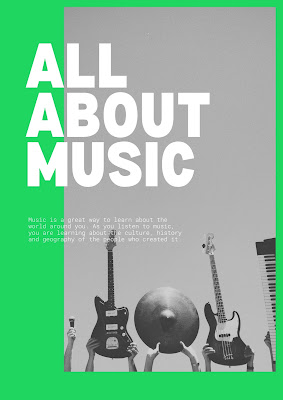All About Music History of Music,Music evolution
The history of songs and music is a vast and fascinating topic that spans many centuries and cultures. Here is a brief overview of the development of music over time:
Prehistoric music: The earliest forms of music likely date back to prehistoric times, when people would sing, dance, and make music using simple instruments such as drums and flutes.
Ancient music: In ancient civilizations such as Egypt, Greece, and Rome, music played an important role in ceremonies, rituals, and entertainment. Musicians used a variety of instruments, including harps, lyres, and lutes, and wrote music using a system of notation.
Medieval music: During the Middle Ages, music was an important part of religious life, and composers wrote music for use in churches and monasteries. Secular music also flourished during this period, with the development of instruments such as the lute and the emergence of troubadours and minstrels.
Renaissance music: The Renaissance was a time of great innovation in music, with the development of new forms such as opera and the sonata, and the use of new instruments such as the violin. Composers of this period included William Byrd, Johann Sebastian Bach, and Wolfgang Amadeus Mozart.
Modern music: In the modern era, music has continued to evolve and diversify, with the emergence of many different genres such as classical, jazz, rock, and hip hop. Today, music is an important part of many aspects of culture, and
Music evolution:
Music has evolved over time in response to a variety of social, cultural, and technological factors. Some of the key events and developments that have shaped the evolution of music include:
The invention of new instruments: Throughout history, new instruments have been invented and developed, which have expanded the range and possibilities of music. For example, the invention of the violin in the Renaissance allowed for greater expression and virtuosity in instrumental music, while the development of electronic instruments in the 20th century opened up new possibilities for synthesizing and manipulating sound.
The emergence of new music styles and genres: Music has always been influenced by the cultural and social contexts in which it is created. This has led to the emergence of many different styles and genres of music over time, such as classical, jazz, rock, and hip hop.
The impact of technology: Technology has had a significant impact on the evolution of music. The invention of the printing press allowed for the widespread distribution of sheet music, while the development of recording technology in the 20th century revolutionized the way music was produced and consumed.
The influence of social and cultural trends: Social and cultural trends have also played a role in the evolution of music. For example, the counterculture movement of the 1960s led to the emergence of new musical styles such as psychedelic rock and folk music.
These are just a few of the factors that have contributed to the evolution of music over time. Music continues to evolve and change in response to new influences and developments.
About Ancient instruments:
Ancient civilizations such as Egypt, Greece, and Rome had a wide variety of musical instruments, many of which are still in use today. Here are a few examples of ancient instruments:
Harp: The harp is a stringed instrument that has a long history dating back to ancient civilizations. It was used in a variety of contexts, including religious ceremonies and secular entertainment.
Lyre: The lyre is a small, portable stringed instrument that was popular in ancient Greece and Rome. It was played with a pick and was used both as a solo instrument and as accompaniment for singing.
Lute: The lute is a stringed instrument with a pear-shaped body and a long neck. It was popular in the Middle East, Europe, and Asia and was used in a variety of musical styles, including classical and folk music.
Flute: The flute is a woodwind instrument that has a long history dating back to ancient civilizations. It was made from a variety of materials, including bone, wood, and metal, and was played with a variety of techniques.
Drum: The drum is a percussion instrument that has a long history dating back to ancient civilizations. It was made from a variety of materials, including animal hides and wood, and was used in a variety of contexts, including religious ceremonies and secular entertainment.
These are just a few examples of ancient musical instruments. There are many other ancient instruments that have played an important role in the history of music.
Electric guitar: The electric guitar is a stringed instrument that is amplified by a pickup and an amplifier. It was invented in the 1930s and has become an integral part of many modern music styles, including rock, blues, and jazz.
Keyboard: The keyboard is a type of instrument that generates sound by pressing keys that correspond to musical notes. Keyboards can be played by hand or with a keyboard stand and pedals, and can be used to mimic the sound of a wide range of instruments.
Electronic drum kit: The electronic drum kit is a type of percussion instrument that uses electronic sensors to trigger sounds that are stored in a computer or sound module. It allows for a wide range of sounds and can be easily amplified.
Synthesizer: The synthesizer is an electronic instrument that generates sound by using oscillators to create waveforms, which are then modified by filters and other effects. Synthesizers can create a wide range of sounds and are often used in electronic and pop music.
Digital audio workstation (DAW): A digital audio workstation (DAW) is a software program that allows users to record, edit, and produce music using a computer. It allows for the creation of complex compositions and the manipulation of audio in a variety of ways.
Music genres are categories of music that are defined by certain characteristics, such as the type of instrumentation, the style of composition, and the intended audience. Some of the most popular music genres include:
Classical: Classical music is a genre of music that encompasses a wide range of musical styles and traditions, including orchestral music, opera, and chamber music. It is typically characterized by formal composition and the use of traditional instruments.
Rock: Rock is a genre of music that originated in the 1950s and is characterized by the use of electric instruments and a heavy emphasis on rhythm. It includes subgenres such as classic rock, punk, and heavy metal.
Pop: Pop music is a genre of music that is characterized by catchy melodies, simple harmonies, and a focus on vocals. It is often produced and marketed for a wide audience and includes subgenres such as pop rock, pop punk, and pop soul.
Hip hop: Hip hop is a genre of music that originated in the 1970s and is characterized by the use of rap and DJing. It includes subgenres such as rap, grime, and trap.
Jazz: Jazz is a genre of music that originated in the early 20th century and is characterized by improvisation, syncopated rhythms, and the use of brass and woodwind instruments. It includes subgenres such as bebop, swing, and fusion.
Electronic: Electronic music is a genre of music that is created using electronic instruments and technology. It includes subgenres such as house, techno, and trance.
This is just a small sample of the many different music genres that exist. Music is a diverse and constantly evolving art form, and new genres are constantly emerging.
The Renaissance was a time of great innovation in music, and many new instruments were developed during this period. Here are a few examples of instruments that were popular during the Renaissance:
Violin: The violin is a stringed instrument that was developed in the Renaissance and has become an important part of the classical music tradition. It has a small, pear-shaped body and is played with a bow.
Lute: The lute is a stringed instrument with a pear-shaped body and a long neck. It was popular in the Renaissance and was used in a variety of musical styles, including classical and folk music.
Harpsichord: The harpsichord is a keyboard instrument that was popular in the Renaissance and Baroque periods. It has a plucked string mechanism and a keyboard that is played with the fingers.
Recorder: The recorder is a woodwind instrument that has a narrow, cylindrical shape and is played with a single reed. It was popular in the Renaissance and was used in a variety of musical styles.
Trumpet: The trumpet is a brass instrument that has a narrow, conical bore and is played by buzzing the lips into a cup-shaped mouthpiece. It was used in a variety of musical styles in the Renaissance, including military and ceremonial music.
These are just a few examples of instruments that were popular during the Renaissance. The Renaissance was a time of great innovation in music, and many new instruments and techniques were developed during this period.










Comments